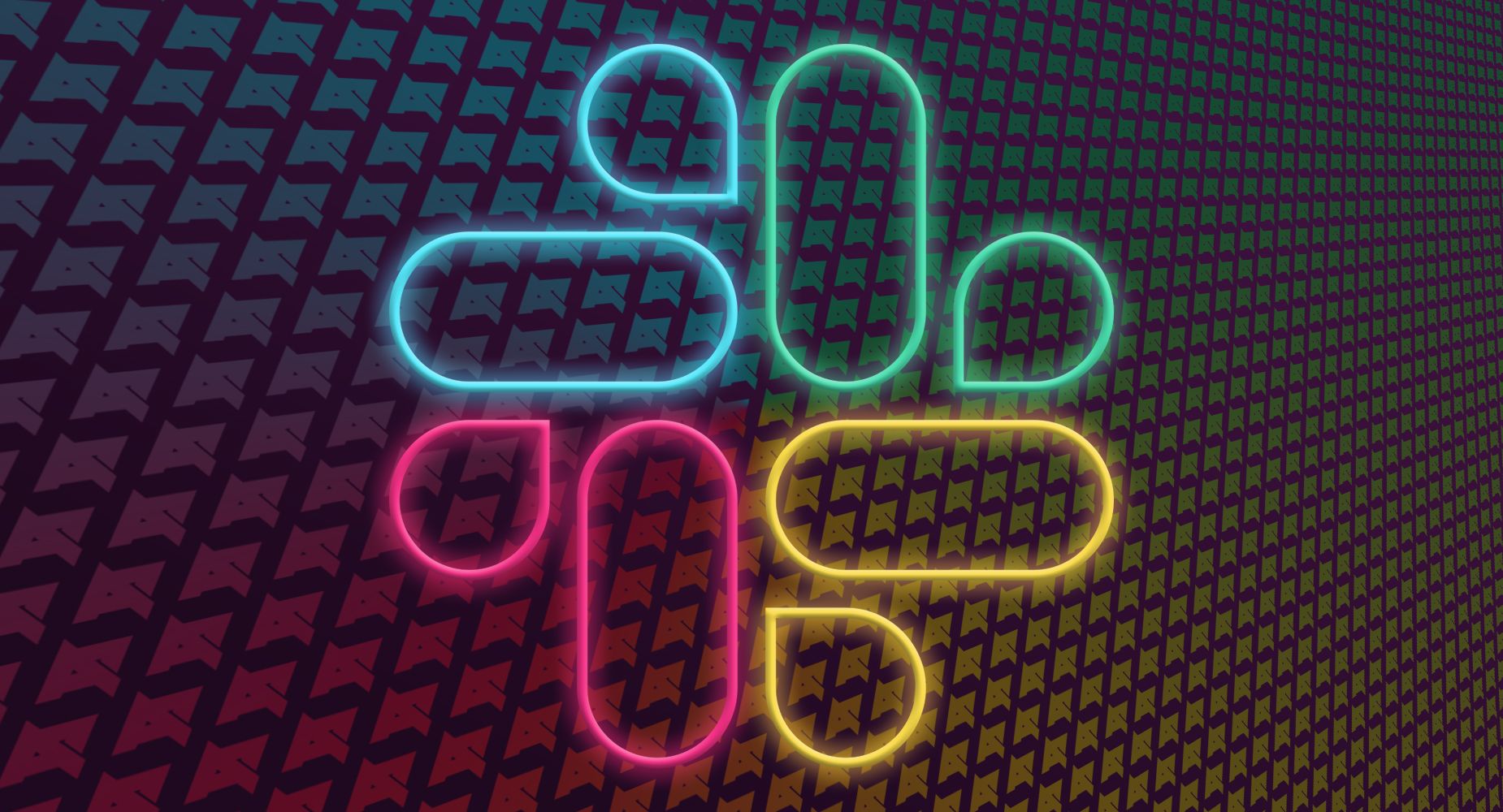Review sản phẩm
Giao diện mới của Slack mang cảm giác như một bước đi sai lệch
Giới thiệu Slack’s revamped UI feels like a step in the wrong direction
Giao diện mới của Slack cảm giác như là một bước đi sai lầm.
Queen Mobile cung cấp các sản phẩm điện thoại di động chất lượng với giá cả phải chăng. Khách hàng có thể tìm hiểu và đánh giá các sản phẩm tại cửa hàng của chúng tôi. Ngay từ cái nhìn đầu tiên, bạn sẽ thấy những sản phẩm chất lượng và hiện đại với nhiều tính năng tiên tiến.
#QueenMobile #ĐánhGiáSảnPhẩm #MuaSắmTạiQueenMobile
Mua ngay sản phẩm tại Việt Nam:
QUEEN MOBILE chuyên cung cấp điện thoại Iphone, máy tính bảng Ipad, đồng hồ Smartwatch và các phụ kiện APPLE và các giải pháp điện tử và nhà thông minh. Queen Mobile rất hân hạnh được phục vụ quý khách….
_____________________________________________________
Mua #Điện_thoại #iphone #ipad #macbook #samsung #xiaomi #poco #oppo #snapdragon giá tốt, hãy ghé [𝑸𝑼𝑬𝑬𝑵 𝑴𝑶𝑩𝑰𝑳𝑬]
✿ 149 Hòa Bình, phường Hiệp Tân, quận Tân Phú, TP HCM
✿ 402B, Hai Bà Trưng, P Tân Định, Q 1, HCM
✿ 287 đường 3/2 P 10, Q 10, HCM
Hotline (miễn phí) 19003190
Thu cũ đổi mới
Rẻ hơn hoàn tiền
Góp 0%
Thời gian làm việc: 9h – 21h.
KẾT LUẬN
Nội dung bài viết được tóm tắt như sau: Slack đã cải thiện giao diện người dùng (UI) của mình nhưng có vẻ như đây là một bước đi sai hướng.

Back in August, Slack announced it would introduce a new user interface to increase focus and productivity. Those changes started showing up earlier this month: buttons moved around, colors changed, and — perhaps most egregious of all — the workspaces consolidated into one icon. To say that some users are not happy about these changes would be a bit of an understatement.
What are the new changes in Slack?
The biggest change in the new Slack UI is to the left-most sidebar, which was once populated with icons representing your workspaces. These have been merged into a single icon, below which are quick-access buttons that change your views within your current workspace.
Another very noticeable change is the color of the new interface. When your workspace updates to the new UI, your theme will automatically default to “Aubergine,” Slack’s traditional eggplant purple. The theme colors also occupy much more of the workspace than they did in the previous version, and instead of consisting of solid colors, the new UI mostly displays gradients of colors.
In addition to these highly visible changes, the new Slack has added new buttons, consolidated and moved a few others, and introduced modal windows that pop up when you hover over specific icons in your sidebar.
Where the new design goes wrong
At the heart of the irritation surrounding the new changes is the consolidation of all the workspace icons into one icon. If you’re only a member of a single workspace, you might not understand what all the ire is about. Previously, all of your workspaces were visible on the left-most sidebar. If you had any notifications for that workspace, it would be indicated next to its icon, allowing you to know at a glance which workspaces needed your attention.
With the update, all of those workspace icons are now in a single icon. If any workspace has a notification for you, it is displayed next to the new consolidated icon. The issue here is that not all workspaces have the same priority. One could be for your 9-to-5 job, and another could be for your writing group. It’s important to know when you have a notification from your job, not so much when it’s someone looking for a critique.
Another big change is the color options. Previously, users had control over nearly every aspect of Slack’s colors, from the title bar to the text color to the color of active and inactive selections. What’s more, there was the option to customize the colors using the full 16-million-color palette of the RGB color space.
With the new UI, users are limited to 20 colors, which can be applied to just four elements. It’s also not possible to change the text color, leading to contrast issues for some users, and worse, Slack has removed the themes that enhanced accessibility for users with color blindness, leaving them with few accommodation options.
Why users are upset
People hate change. We like things that are familiar to us, and we thrive on routine. When we lose those things, it can feel like something has been taken from us. “A redesign change can be seen as a loss as users lose familiar features and elements they were used to,” says Dr. Maria Panagiotidi, a user experience expert and co-host of the podcast UX Guide to the Galaxy.
We don’t just feel loss for the familiar; it feels like we’re losing something that belongs to us. Slack has done a phenomenal job of making us feel ownership of its product. It reports that users in its paid tiers spend an average of nine hours per day logged in. Couple this with the level of customization the app previously offered, and it’s no wonder people feel a sense of ownership and investment. But this perceived ownership gives users a sense of loss aversion for the old Slack, even if some aspects of the layout and the new functionality are a net positive.
Allow users to revert to the previous version for a period of time and slowly get used to the update
At the root of our loathing and sense of loss is frustration with our lack of control. On an objective level, we no longer have the ability to control how Slack looks by being locked into a rigid color palette. On a subjective level, we can no longer control how we engage with our notifications. The whole thing looks different, and we don’t have any input into the process.
But here, at the root of our anger, lies the key to mitigating it. Change is inevitable, but there are some best practices UX/UI designers can use to ease the transition. “Giving users control can help,” Dr. Panagiotidi tells me. “For example, allow users to revert to the previous version for a period of time and slowly get used to the update.” Reddit, for instance, pushed out a redesign back in 2018, but it’s still possible to interact with the site using the old layout, and Reddit has no plans to get rid of it just yet.
In her blog, Dr. Panagiotidi also stresses that incremental changes are a much better approach than drastic changes. Can you remember when Amazon redesigned its website? Neither can we, but it’s certainly not the same site that went online in 1995. Instead of pushing out major redesigns, Amazon opts for smaller changes that don’t rock the boat.
The only constant is change
As much as we feel ownership over Slack, it’s important to realize that the suits behind Slack have goals of their own: more users and more money. To reach those goals, Slack has to balance two trends that are often in direct conflict with each other.
On the one hand, it needs to continually add new features to adapt to the growing and evolving needs of its clients and the way they interact with Slack. This is exemplified by the addition of draft messages and the WYSIWYG editor to Slack in 2019, both of which upset a number of people.
On the other hand, it has to manage the inevitable feature bloat that comes with growth and make its interface simple enough to be used by the greatest number of users. This was the philosophy behind Slack’s previous UI update (which people were also upset about) and has been the driving force behind the move from command line interface (CLI)-based operating systems like DOS and Linux to graphical user interface (GUI)-based operating systems like Windows and Macintosh.
Changes to how workspaces are displayed and the overall look of Slack are completely in line with these principles and Slack’s stated goal of removing distractions from its platform, although in this case, it clearly overshot the mark with some of its choices. To their credit, the team at Slack seems to be cognizant of their missteps and, in at least one case so far, has worked to correct them: In just the past week, the option to view all of your workspaces on a sidebar has been returned.
There is no way to revert to the old Slack. There are some hacky workarounds based on CSS injections to the web client or using arcane magic in Slack’s CLI, but for the most part, you’ll either have to adapt to the new interface or convince your boss to switch chat platforms. If you need to let Slack know exactly how you feel, you can leave feedback via the app or sign an online petition. And if you’re tired of hearing your coworkers complain about the new interface, you can always mute the channel.
Khám phá thêm từ Phụ Kiện Đỉnh
Đăng ký để nhận các bài đăng mới nhất được gửi đến email của bạn.





